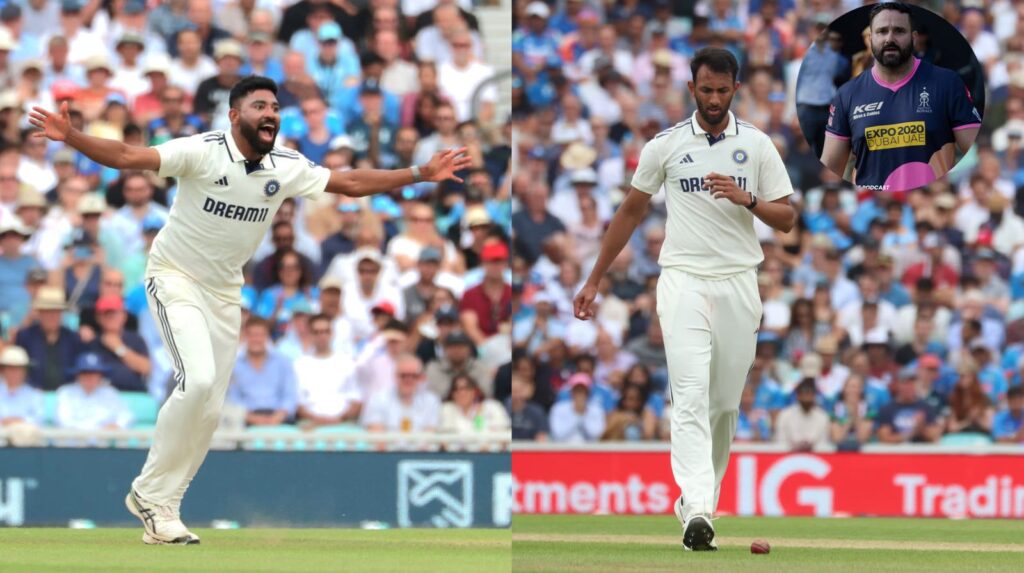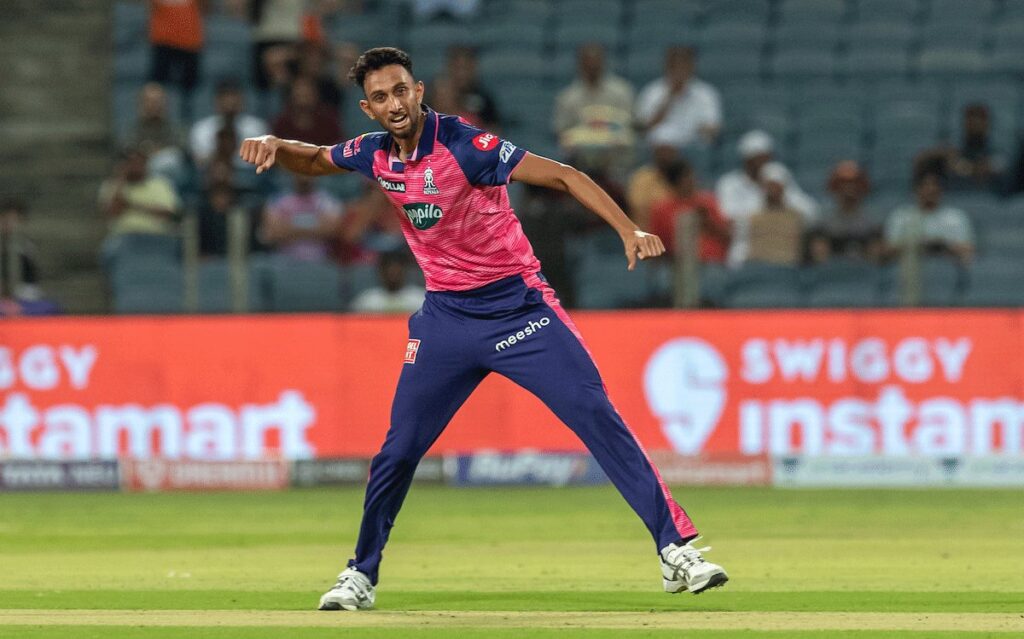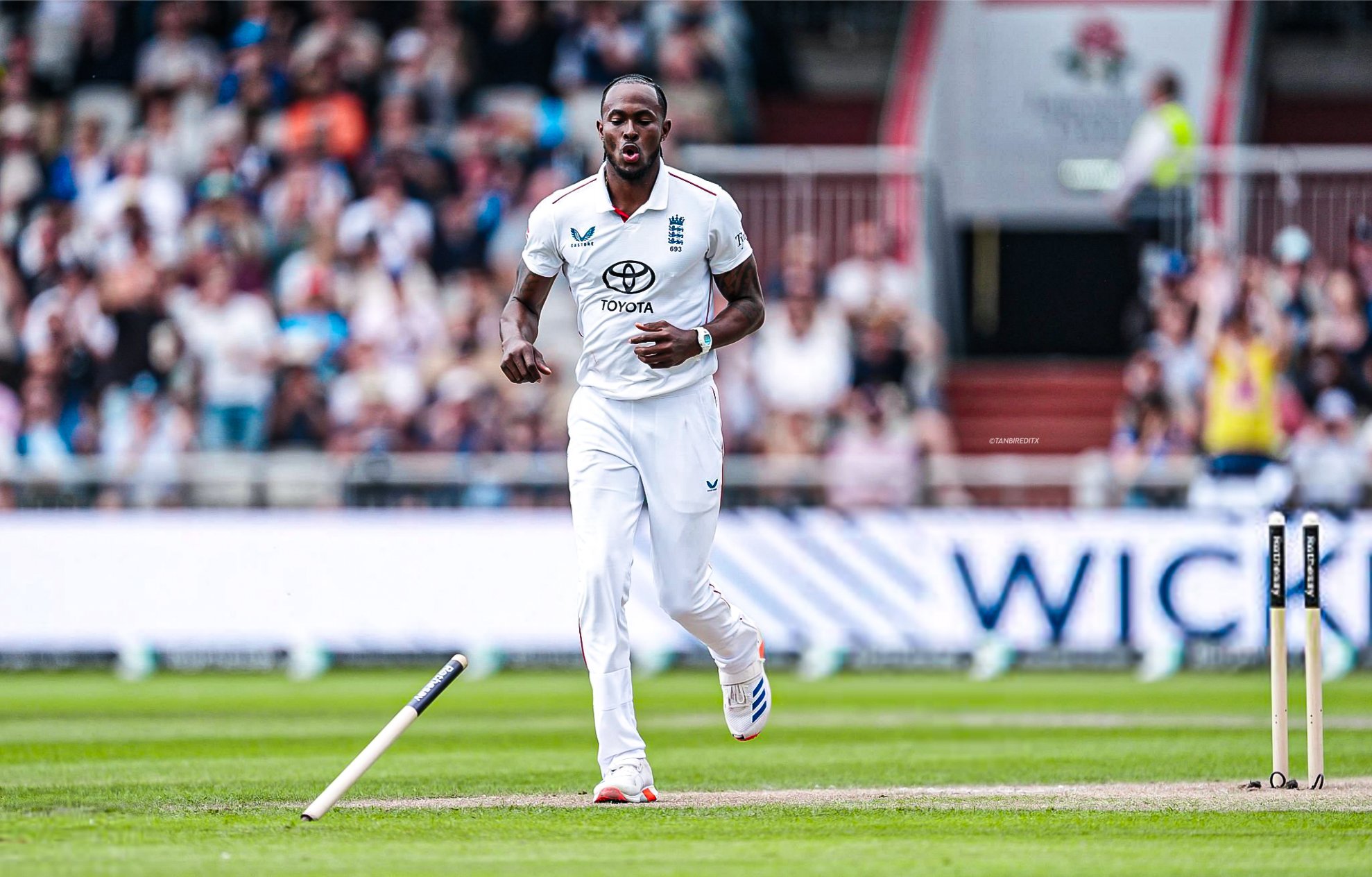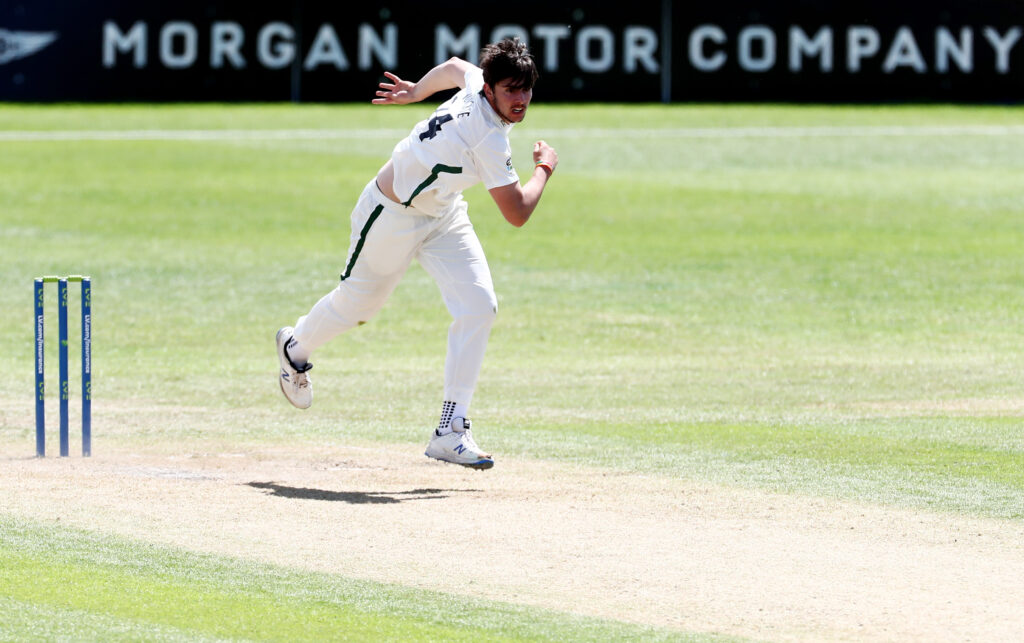
Over a period of 14 years, Steffan Jones played 148 first-class games for four different Counties. But it is as a bowling coach that he has made a name for himself in the cricketing landscape. He is known for highlighting the importance of data and sports science in coaching, emphasising on the physical, technical and mental side of things.
Jones, who is the current High Performance Fast-Bowling coach of Rajasthan Royals, has worked with pace bowlers like Jofra Archer, Stuart Broad, Prasidh Krishna and co. In fact, during his stint at Hobart Hurricanes, he had once helped Broad to regain his pace and away shape.
In an exclusive chat with RevSportz, the brainchild behind Pacelabs, shares his thoughts on some of India’s fringe pacers, the reasons behind frequent injuries among the national team’s pace bowlers, England’s fast-bowling resources, and more.
How do you look at the redoubtable performance of the Indian pacers in the final Test at The Oval?
It was an incredible series, it was great for Test cricket, it was great for both countries. In terms of the bowlers, Siraj was outstanding, he is such a workhorse, he has the mentality of a true fast bowler, he is probably a throwback to the 1990s and early 2000s in terms of how he behaves; in-your-face fast bowler. He keeps running in, he has got nice, simple and a repeatable bowling action. His engine is massive. I am a huge fan of him, as a character.
Obviously, with someone who gives 100 per cent every single delivery, the way he does, there are going to be spells where he would feel a bit tired. But when he is on song, in rhythm, he is outstanding. Probably that he bowled his quickest ball on the final morning, when he bowled 90mph, that tells you everything about him as a character and his fitness levels.
I think Prasidh Krishna can lead the Indian attack over the next five years at least. He has got a really good action, he comes over the top, hits the deck hard, he is quicker than you think. I think with the right support, with the right training, and workload management, he could consistently hit 90mph. He is what I call a hip-dominant bowler, where he relies on speed in his run-up. And not so much on grunt and muscle.
Akash Deep would be a lot similar to bowlers in English cricket. Early 80mph, swing it away, very much a county cricket sort of bowler. Did well at Edgbaston, I know he was successful in the Ranji Trophy. But I believe whatever happens with Bumrah, obviously he is world class, if you have an attack of Bumrah, Siraj and Krishna, I think those are the three main ones.
As someone who has worked with Prasidh, what are your views on his bowling? He took key wickets at The Oval, but his critics point to inconsistencies…

With regard to Prasidh and critics, one has to understand he has had two years of injuries, he had a really serious back injury that can take a lot out of your body. With serious injuries, with a stress fracture, people need to understand the pain they go through in general while moving around, then to have to bowl as well, they would have felt the pain while playing. That has left mental scarring on bowlers because it is genuinely the worst pain you can have. So, he is going to take time for him to be confident in going flat out and just get in the rhythm, coordination, and for his brain to understand now that he is fit.
He is no longer injured, so at the minute I think he is still inhibited a bit because of that pain. The brain doesn’t want the body to go through that pain again. In the coming year, I think he will show how good he is because I genuinely believe he can be world class. Obviously, having worked with him for a couple of years. Obviously, in franchise cricket, you don’t really have much impact, but you can see how they bowl, how they work. He is intelligent, he knows his body. Every bowler in India has critics, but put faith in Prasidh and he will reward Indian cricket moving forward.
Over a period of time, a lot of young Indian fast bowlers have been repeatedly laid low by injuries – be it Mayank Yadav, Mohsin Khan, Prasidh, Umran Malik, Avesh Khan, Akash, and many more. Can you give a broader picture as to why Indian pacers suffer so many injuries?
In terms of injuries, the issue is two-fold I think in India. The workload management doesn’t mean not bowling, that is such an important concept to understand. The young bowlers, or bowlers in general, bowl too much in the nets. They bowl for two hours at a time because it is still in the mindset that more is better. People still believe in old-fashioned information that you have to do a lot for muscle memory and all that. The modern-day research shows that this is incorrect. That doesn’t impact a skill like fast bowling where it has so many moving parts. A bowler will never repeat internally the same delivery. Accuracy-wise, and externally, the bowler will always be the same… consistent. But how they get there will be slightly different. So, if you ask a bowler to bowl 50 balls in the nets, they will be 50 different balls. Then the argument of practice makes perfect goes out of the window. Practice makes permanent, not perfect.
So, what happens is bowlers bowl too many balls, because net bowling, despite people might think it is hard work and sweating, it doesn’t transfer to match-day. It is not intense enough. It is not hard enough for the body to have to adapt to it. It is called representative design where how we train needs to match the intensity on match-day, but it doesn’t. What happens then is workload management takes into account net bowling as total balls per week for example. But unfortunately, all those balls are worthless because they don’t match the intensity of match-days. 40 percent of injuries happen on match-days. So, you get injured when you play. So, there is a disconnect between the amount of balls you bowl in the nets that doesn’t help match-day, those balls are counted as workload management.
Then I get why X cricketers of a certain generation would say workload management is nonsense because at the minute it is not fit for purpose, as you can’t put the same value on net bowling as you would on match-day. You can’t put the same value on a slower ball as you do with a match-intensity ball. So, it has to be based on the intensity of the delivery, that is where workload management comes in. The bowlers bowl too many balls in the nets in India. Secondly, as there is not a good base of good physical literacy, in terms of when they were growing up in schools in PE programme – sort of good movement skills, doing a lot of strength and conditioning and work. They haven’t got the base of athleticism. There is a lack of athleticism in a modern-day cricketer in India simply because it wasn’t provided to them when they were younger. In India, they specialise too early, they go straight to cricket. So, you develop the same pattern, you do pattern overload, you do the same things. So, if you think about it, you do the same thing all the time and you do a lot of it because it is still in that outdated model of doing more, then you’re going to develop poor habits.
It is very difficult to change the technique of a bowler in India because they have done so much bowling of their current model, which might not be safe and repeatable and effective and efficient. So, in schools you need to get a good physical education, movement programmes. And thirdly, I don’t think their strength and conditioning programmes are good enough, it doesn’t quite prepare them for match-days. It is 20 years behind high-performance models. Having spent some time in MLC, having spent some time in the NFL in America, this goes across the board actually. Cricket is a long way behind other sports in terms of high performance. We are afraid of strength work, we are afraid of overload, simply because of the mindset that you shouldn’t do strength training, shouldn’t do weight training. I agree you shouldn’t do weight training if it is the incorrect weight training. The bowler’s front foot takes eight times the body weight, the back foot four times the body weight. So, the forces in bowling are massive. But the difference between bowling and other sports is that those forces happen in a fraction of seconds. So, it is careful planning, careful programming of training. Here, it is a mixture of running, jumping, and throwing. So, my programmes in pace labs are a mixture of long-jump training, triple jump training, sprint training and javelin training.
The amount of rotational work that happens in bowling… the fourth one is lack of understanding of human movements and human anatomy in terms of technique. Understanding the technique is how a bowler looks, the mechanics is how it works. So how a bowler looks is determined by how strong each muscle is that moves the joint into position because that concept is alien in cricket for some reason. We search for the perfect technique but there is no such thing as perfect technique. Everyone is different. We can’t be fitting bowlers into a certain technical model when they can’t hold those positions. There is a lack of understanding of biomechanics, what is needed. So coaching education is needed in India as well. So those are the four things with injuries – Over-bowling, lack of physical literacy when they are younger, ineffective strength and conditioning programmes, and coach education. Managing technical work and workload management as well.
Are certain actions more prone to back injuries?
Back injuries happen for one of the four reasons that I have explained above. The spine can’t cope with shearing forces, basically you can bend forward, sideways, rotate, but you can’t do all of them at once. If your technique is not safe, and you haven’t got the mechanics to support it, you’re going to get injuries through shearing forces, then if you’re bowling too many balls, it is a recipe for disaster.
I do believe like everywhere in the world really, there is a lack of genuine 90mph bowlers. And then you have a generation of bowlers who can bowl that speed now, who are born from the era of workload management, so the generation Z, born in 2000s or late 1990s, those were workload directives from whatever country, which means a lot of young bowlers haven’t got those chronic workloads. They haven’t developed a base of bowling in matchdays, training in the nets is irrelevant. So, matchday bowling is where your chronic workload needs to be worked out. I don’t think a lot of bowlers when they were younger have developed a big enough base because of careful workload management, which were designed with good intentions, but I don’t believe it has worked. A lot of bowlers are overcooked, but a lot of (other) bowlers are undercooked.
How do you look at Jofra Archer’s comeback? He has had a horrid time with elbow injuries in particular…

Jofra Archer for me is the ultimate bowler. He is a very natural athlete, he has got great athleticism. You can see when there is so much natural athleticism because they look as if they don’t try. Yes, he had his elbow injuries but I think he is over them now and he is great for the game. So, if you look into the design of a fast bowler from scratch, it will be Jofra Archer. He is a hip-dominant bowler, he is a throwback to the 1980s, very natural, just a very, very good bowler.
What about Josh Tongue and his 11 o’clock release? Do you feel it could also lead to injuries? He has already suffered multiple shoulder injuries…

With regards to Tongue and his perpendicular release position, I know it is a big thing at the moment in England because they believe that due to the release position, the batter has to play at every ball because it comes into you. Stokes is the same. But that is fine if it happens but people need to be aware to get your arm in that position, which is say 11 o’ clock, or even 12 o’clock, the spine has to do more lateral flexion. The spine has to bend more sideways or a huge shoulder mobility. So with that, the risk of injuries happens more. But we also can’t force bowlers into bowling perpendicular, then that will cause massive injuries because the spine is going into a place that is not meant to be naturally. I think Bumrah does the same, but they do it naturally.
The shoulder is at its weakest, as a bowling-socket joint, at 12 o’clock, what I call it as the eye position. The shoulder is at its strongest in a ‘T’ position, which is why six of the fastest bowlers of all time are low-arm slot bowlers, slingers. You think of Fidel Edwards, Shoaib Akthar, Jeff Thomson, Shaun Tait, Lasith Malinga, Mitchell Johnson… these bowlers have a lower-arm slot; the arm is at its strongest between 3 o’clock and 2 o’clock.
Every bowler needs a different training method. We can’t be training bowlers the same. You have hip-dominant bowlers, which are thinner, who rely on speed, you have knee-dominant bowlers, which need stress work because it is more of rotation. But you also got knee-dominant slingers. They need a different training method because their arm-slot is lower, as they put more stress on the upper body. This is why strength and conditioning is such an important part of a fast bowler’s development.
What are your thoughts on England’s pace stocks in general, especially some of the inexperienced pacers coming through the ranks?
Jamie Overton hits the deck hard, he is tall, obviously he is from the same county that I am from; born in the Southwest of England. I have seen him growing, hopefully he is over his injuries. Runs in hard, bowls at a good pace, high 80s. Then you have Brydon Carse, Sam Cook and Josh Tongue. Tongue – England are big at the minute – on bowlers who bowl past the perpendicular. They release (it) very high. Tongue and Carse bowl at a decent pace. Sam Cook, obviously, is a typical English seamer who hits good lengths and has got a great skill set.
Follow Revsportz for latest news



